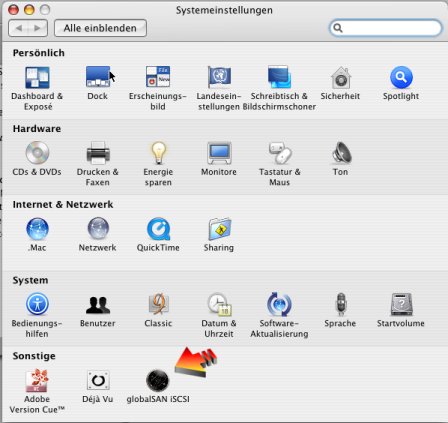

- #Iscsi globalsan black friday mac os
- #Iscsi globalsan black friday install
- #Iscsi globalsan black friday download
- #Iscsi globalsan black friday free
Click on the whole disk entry, select the Partition tab, enter the volume name and the desired file system format.Ĭlick Apply to get the confirmation popup. You’ll see the iSCSI “virtual disk” entry. Start the Disk Utility that resides in the Applications / Utilities folder. If the device already has a file system and you wish to keep it, skip this step. This step should be taken if you wish to create a file system on the device. Enter the user name and password, and click Connect.Īt this point, you’re connected to the iSCSI target device and the device volume icon should show up on the desktop. You can click on the Connected checkbox to connect to the target device, or if you had specified CHAP authentication, select the target entry and click the Log On… button.

You should see the iSCSI target device that was created in FrontView.

Ayuntamiento de burjassot ordenanzas, Iscsi initiator windows 2008 r2, Dundas square movies 2012. You’ll see the IP address listed in the Portals page. Target black friday ad 2015 ps4, Team trekrok. In the popup, enter the IP address of the ReadyNAS. Select the Portals tab.Ĭlick on to add an iSCSI portal. Step 2: Setup globalSAN iSCSI Initiator to connect to the iSCSI targetĪfter rebooting, open the globalSAN iSCSI utility from System Preferences. You’ll need to reboot the Mac after the installation.
#Iscsi globalsan black friday download
Click on the icon below to open their download page.
#Iscsi globalsan black friday free
The folks at Studio Network Solutions has made their globalSAN iSCSI Initiator available free for download subject to their EULA.
#Iscsi globalsan black friday install
Step 1: Download and install the globalSAN iSCSI Initiator It’s a simple 3-step process to setup access to the iSCSI target on the ReadyNAS. If you have a sense of adventure, try this out.There are several iSCSI initiators available for OS X, but we’ll limit this example to using the globalSAN iSCSI initiator which appears to be popular. Factor in Leopard being brand spankin’ new, and I can’t say for sure what caused it. They don’t specifically mention compatibility with Leopard, but this has been working for me for several hours now as of the time of this writing.Ĭaveat emptor: I did hard lock the iMac during a first attempt at an initial backup, but it’s hard to say whether it was iSCSI or one of the myriad other things I was doing at the time. If you have a fileserver capable of delivering iSCSI LUNs, (and if you don’t know what iSCSI LUNs are, go get a USB drive), you can use the globalSAN iSCSI Initiator for OS X to do this with Leopard. You even format it as HFS+ in the normal way when a new disk is connected. iSCSI accomplishes this in such a way that MacOS (and any other iSCSI client) sees the disk as a locally connected SCSI disk, and therefore it passes the criteria for Time Machine. To do this, I employed iSCSI to connect storage space on the Linux server to the Mac. I figured I’d mix it up a little and try centralizing my backup storage to my Linux servers. To my knowledge, Time Machine was to support two ways of backing up – to a locally connected hard drive, or to a hard drive connected to an AirPort base station. One of the things I was looking forward to in MacOS X 10.5 was Time Machine. Got Leopard? Too cheap/lazy to go get a USB drive for backups? Like taking risks? Etc. I’ll leave the original post here for those interested. Download and install globalSAN iSCSI Initiator on your Mac.
#Iscsi globalsan black friday mac os
This works perfectly, as Time Machine creates a disk image with an HFS+ filesystem on which to perform backups, and mounts that. Connecting to iSCSI targets using globalSAN iSCSI initiator on Mac OS Prerequisites: Ensure that there is an iSCSI target on the QNAP NAS in Main Menu > Storage Manager > iSCSI Storage. Then you can use a Samba or AppleShare (even Netatalk) server share as a time machine backup location. I’ve run into some of the same problems as commenters below, and I’ve become convinced the iSCSI angle is too risky for now.ĭefaults write TMShowUnsupportedNetworkVolumes 1 If you’ve arrived here looking to use iSCSI with Time Machine, I’ve switched to another more robust method.


 0 kommentar(er)
0 kommentar(er)
